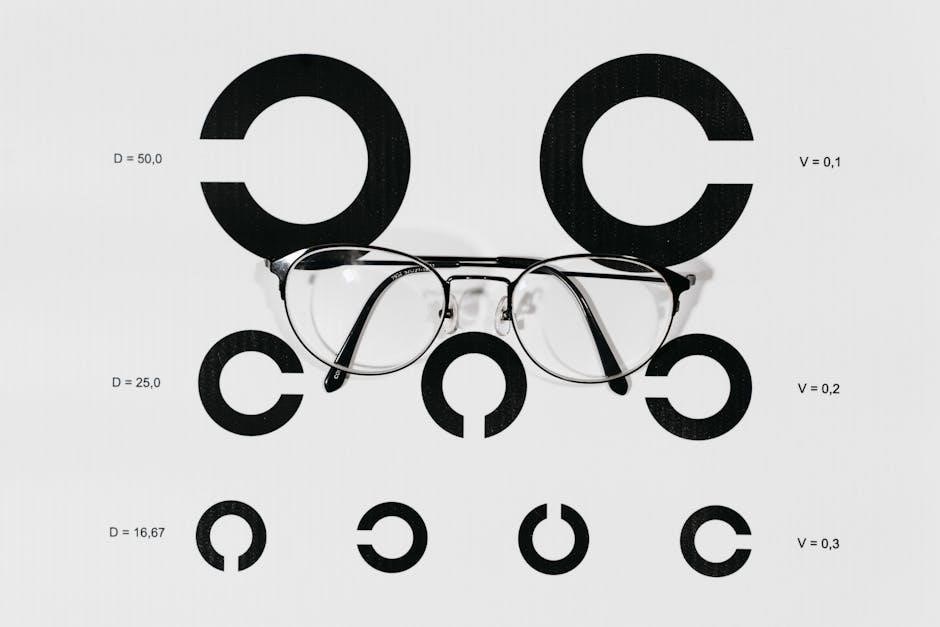Motor frame size charts are essential tools for selecting electric motors, providing standardized dimensions, shaft specifications, and mounting details as per NEMA and IEC standards.
1.1 Importance of Motor Frame Size Charts

Motor frame size charts are crucial for ensuring compatibility, performance, and safety in motor applications. They provide standardized dimensions, shaft specifications, and mounting details, enabling engineers and technicians to select the right motor for specific tasks. By adhering to NEMA and IEC standards, these charts simplify the process of replacing or upgrading motors, reducing downtime and ensuring operational efficiency. The detailed information helps in verifying motor dimensions, preventing mismatches, and optimizing system integration. These charts are indispensable for industries relying on precise motor specifications, making them a key resource for maintaining and upgrading equipment effectively.
1.2 Overview of NEMA and IEC Standards
NEMA (National Electrical Manufacturers Association) and IEC (International Electrotechnical Commission) standards define motor frame sizes globally. NEMA focuses on North American markets, offering frame designations like 42, 48, and 56, with specific shaft heights and dimensions. IEC provides metric-based standards, such as frames 63, 71, and 80, ensuring international compatibility. Both standards include detailed charts for motor dimensions, keyseat specifications, and mounting configurations, aiding in motor selection and installation. These standards ensure consistency, safety, and efficiency, making them vital for engineers and manufacturers worldwide. By adhering to these guidelines, motors meet industry requirements, facilitating seamless integration into various applications.

Understanding NEMA Frame Sizes
NEMA frame sizes provide standardized motor dimensions, ensuring compatibility and simplifying selection for various applications, with detailed charts for precise specifications and reliable performance.
2.1 NEMA Frame Designation System
The NEMA frame designation system provides a standardized method for identifying motor frames, ensuring consistency across manufacturers. Frames are designated by numbers (e.g., 42, 48, 56) and letters (e.g., T, U, V), which specify dimensions like shaft height and keyseat depth. This system simplifies motor selection by aligning frame sizes with application requirements. For instance, smaller frames (e.g., 42) are used for lighter-duty applications, while larger frames (e.g., 440T) are designed for heavy industrial use. Understanding the NEMA frame designation system is crucial for engineers and technicians to ensure proper motor sizing and compatibility, reducing errors in installation and operation.
2.2 Key Dimensions in NEMA Frame Sizes
NEMA frame sizes define critical motor dimensions, including shaft height, keyseat depth, and mounting configurations. These measurements ensure compatibility and proper fitment across applications. For example, a NEMA 56 frame has a shaft height of 4.5 inches, while a 140T frame features a shaft height of 5.3 inches. Key dimensions like the “D” dimension (bearing diameter) and “E” dimension (endshield diameter) are standardized to simplify motor selection. Larger frames, such as 440T, include additional features like lifting eyebolts for easier handling. These standardized dimensions enable engineers to match motors to specific requirements, ensuring optimal performance and reducing installation challenges.
2.3 Shaft Height and Frame Size Relationship
Shaft height is a critical dimension in NEMA frame sizes, directly correlating with the frame size to ensure proper motor performance. For instance, a NEMA 56 frame has a shaft height of 4.5 inches (114.3 mm), while a NEMA 140T frame features a shaft height of 5.3 inches (133.35 mm). Larger frames, such as NEMA 280T and 360T, have shaft heights of 17 inches (431.8 mm) and 21 inches (533.4 mm), respectively. This proportional relationship ensures that motors are appropriately sized for their intended applications, providing the necessary torque and power without compromising efficiency. Standardized shaft heights simplify motor selection and installation across various industries.
IEC Frame Size Standards
IEC frame size standards provide metric-based motor dimensions, widely used globally, ensuring compatibility and efficiency. They complement NEMA standards, offering modular designs for various applications.

3.1 IEC Frame Designation System
The IEC frame designation system uses a numerical code to define motor dimensions, ensuring global consistency. The system specifies shaft heights, frame lengths, and mounting interfaces, facilitating easy selection and replacement. Unlike NEMA, IEC standards are metric-based, with frame sizes denoted by numbers like 63, 71, or 80, representing shaft heights in millimeters. This system is modular, allowing for standardized production and interchangeability across manufacturers. The IEC system also includes additional letters or suffixes to indicate special features or configurations, making it versatile for diverse industrial and commercial applications. This approach ensures compatibility and simplifies motor integration worldwide.
3.2 Comparison of IEC and NEMA Frames
IEC and NEMA frames differ significantly in design and application. NEMA frames, standardized by the National Electrical Manufacturers Association, are primarily used in North America and measure dimensions in inches. IEC frames, governed by the International Electrotechnical Commission, are metric-based and used globally. IEC frames often have smaller shaft heights and more compact designs compared to equivalent NEMA frames. While NEMA focuses on specific dimensional tolerances, IEC emphasizes modularity and interchangeability. Both systems provide detailed charts for motor selection, but their designations and measurements are not directly interchangeable. Understanding these differences is crucial for selecting the right motor for specific industrial or commercial needs.

Motor Frame Size Chart Details
Motor frame size charts provide standardized dimensions, shaft specifications, and keyseat details for NEMA and IEC frames, ensuring compatibility and precise motor selection for various applications.
4.1 How to Read a Motor Frame Size Chart
Reading a motor frame size chart involves understanding the structured layout, where rows represent frame sizes (e.g., 42, 48, 56) and columns detail dimensions like shaft height, diameter, and keyseat specs. Identify the frame designation and its corresponding measurements, ensuring units (inches or millimeters) are noted. Key dimensions such as AA, D, E, and 2F are critical for mounting compatibility. Additional details like keyseat depth and width are often included. Some charts differentiate between NEMA and IEC standards, highlighting differences in frame designations and measurements. Suffixes may indicate special features or modifications. Always refer to the chart’s legend and product-specific drawings for precise data.
4.2 Typical Dimensions for Common Frame Sizes
Common motor frame sizes, such as 42, 48, and 56, have standardized dimensions for shaft height, diameter, and keyseat depth. For example, a NEMA 56 frame typically has a shaft height of 4.5 inches and a diameter of 1.75 inches. The keyseat depth is usually 0.125 inches. Larger frames, like 140T or 180T, have greater dimensions to accommodate higher power ratings. These measurements ensure compatibility with mounts and equipment. Referencing the chart allows quick identification of critical dimensions, simplifying motor selection and installation. Always verify specific frame details, as slight variations may exist between manufacturers or custom designs. This ensures proper fitment and performance in industrial or commercial applications.
4.3 Special Considerations for Large Frame Motors
Larger motor frames, such as 140T, 180T, and 250T, require special attention due to their size and weight. These frames often have unique mounting configurations and may need additional support structures. Shaft dimensions for large frames are significantly larger, with heights exceeding 10 inches in some cases. Proper alignment and secure mounting are critical to prevent vibration and ensure efficient operation. Additionally, large frame motors may require specialized lifting equipment for installation. Always consult the manufacturer’s specifications, as NEMA standards provide minimum requirements, and actual dimensions can vary slightly between models. Precise measurements and compatibility checks are essential for optimal performance and longevity.
Shaft Dimensions and Keyseat Specifications
Shaft dimensions vary by frame size, with heights and diameters specified in inches or millimeters. Keyseat details are provided for compatibility, ensuring proper motor mounting and performance.
5.1 Shaft Height and Diameter Measurements
Shaft height and diameter measurements are critical for motor compatibility and performance. These dimensions are standardized across NEMA and IEC frames, ensuring consistency. Shaft heights are typically measured in inches or millimeters, varying by frame size. For example, a NEMA 42 frame has a shaft height of 2.625 inches, while larger frames like 56 or 140T have greater heights. Diameters also increase with frame size, ensuring proper load handling. These measurements are detailed in motor frame size charts, providing engineers with precise data for installation and replacement. Accurate shaft dimensions are vital for mounting and operational efficiency, making them a key focus in motor specifications.
5.2 Keyseat Dimensions for Different Frames

Keyseat dimensions vary by motor frame size and are standardized to ensure proper mounting and alignment. These dimensions are critical for securing motors in various applications. For NEMA frames, keyseat widths and depths are specified to match the shaft size and frame designation; For example, a NEMA 56 frame typically has a keyseat width of 0.25 inches and a depth of 0.125 inches. IEC frames also follow similar standards, with dimensions measured in millimeters. Accurate keyseat measurements prevent misalignment and ensure secure connections, making them essential for reliable motor operation. These details are provided in motor frame size charts for precise installation and maintenance.
Mounting Configurations and Frame Sizes
Motor frame sizes determine compatible mounting configurations, ensuring proper alignment and secure connections. Configurations include face-mounted, flange-mounted, and base-mounted options, each tailored to specific applications and frame standards.
6.1 Face-Mounted Motors
Face-mounted motors are designed for direct attachment to equipment, ensuring precise alignment and efficient power transmission. These motors feature standardized face dimensions, such as the A, B, and C faces, which are detailed in NEMA frame size charts. The face includes pilot holes and bolt patterns for secure mounting, while the shaft extension accommodates couplings or pulleys. This configuration is ideal for applications like pumps, gearboxes, and conveyors, where direct drive systems are essential. Proper alignment and mounting ensure optimal performance, reduced vibration, and extended motor life. The charts provide critical measurements to match motor frames with specific applications, ensuring compatibility and reliability in industrial and commercial settings.
6.2 Flange-Mounted Motors
Flange-mounted motors are designed with a rigid flange that includes bolt holes for secure attachment to equipment. These motors are ideal for applications requiring compact installations, such as conveyors, mixers, and pumps. The flange provides a stable mounting surface, while the shaft extension accommodates couplings or pulleys. NEMA frame size charts specify critical dimensions, including flange diameter, bolt circle, and shaft details, ensuring compatibility with various equipment. This configuration minimizes space requirements and reduces alignment challenges. Proper installation using the dimensions from the chart ensures efficient operation, reduced vibration, and extended motor life, making flange-mounted motors a reliable choice for industrial and commercial applications.
6.3 Base-Mounted Motors
Base-mounted motors are designed with a sturdy base that allows for easy installation on a flat surface, ensuring stability and alignment. These motors are commonly used in industrial applications where a rigid mounting surface is available. The base includes mounting holes that align with standard NEMA frame dimensions, ensuring compatibility with various equipment. The motor frame size chart provides critical measurements, such as the base length, width, and shaft height, to facilitate proper installation. Base-mounted motors are ideal for applications requiring high torque and minimal vibration, making them a reliable choice for heavy-duty machinery and industrial processes. Proper alignment using the chart ensures optimal performance and extended motor life.

Application of Motor Frame Size Charts
Motor frame size charts are crucial for selecting appropriate motors across industries, ensuring compatibility, efficiency, and safety in industrial, commercial, and residential applications. They aid in motor selection, replacement, and maintenance, providing standardized dimensions and specifications for optimal performance and reliability.
7.1 Industrial Applications
Motor frame size charts are indispensable in industrial settings for selecting and installing electric motors. They ensure motors meet specific power, torque, and dimensional requirements for machinery, pumps, and conveyors. By referencing these charts, engineers can match motor sizes to load demands, optimizing efficiency and reducing energy costs. The charts also guide proper mounting configurations, such as face-mounted or flange-mounted setups, ensuring seamless integration with existing equipment. Additionally, they aid in maintaining safety standards and compliance with NEMA and IEC regulations. This ensures reliable operation in harsh industrial environments, making motor frame size charts a critical tool for industrial applications, from manufacturing to heavy machinery operations.
7.2 Commercial Applications
Motor frame size charts are widely used in commercial settings to ensure efficient and reliable operation of electric motors. They are essential for selecting motors for HVAC systems, elevators, and retail equipment, where precise sizing is critical. By referencing these charts, facility managers and engineers can optimize motor performance, reducing energy consumption and operational costs. The charts also help in selecting motors for specific mounting configurations, such as base-mounted or flange-mounted setups, common in commercial environments. This ensures compliance with industry standards and facilitates maintenance or upgrades. Accurate motor sizing from these charts minimizes downtime and enhances overall system efficiency in commercial applications, making them indispensable tools.
7.3 Residential Applications
Motor frame size charts are invaluable in residential settings for selecting the right motors for home appliances and systems. They help in sizing motors for HVAC systems, pool pumps, and garage door openers, ensuring efficient operation. By referencing these charts, homeowners and technicians can choose motors that meet specific power and dimensional requirements, optimizing energy use and reducing noise. The charts also aid in selecting motors for various mounting configurations, such as base-mounted or flange-mounted setups, common in residential installations. This ensures proper fitment and performance, making motor frame size charts essential for maintaining and upgrading residential electrical systems effectively and safely. They simplify motor selection for everyday household needs.

Selecting the Right Motor Frame Size
Motor frame size charts guide engineers in choosing the correct frame size based on NEMA standards, ensuring proper dimensions and shaft specifications for optimal energy efficiency and performance.
8.1 Factors to Consider
When selecting the right motor frame size, several factors must be considered, including load requirements, torque, horsepower, and voltage. Shaft dimensions and keyseat specifications, as outlined in NEMA charts, are critical for compatibility. Mounting configurations, such as face-mounted or flange-mounted, must align with application needs. Environmental conditions, like temperature and humidity, also play a role. Additionally, efficiency standards and operational frequency should be evaluated. Proper frame size ensures optimal performance, energy efficiency, and longevity of the motor. Referencing detailed motor frame size charts helps engineers make informed decisions tailored to specific industrial or commercial applications, ensuring seamless integration and reliability.
8.2 Matching Frame Size to Application Needs
Matching the motor frame size to the application ensures optimal performance and efficiency. Consider the required torque, horsepower, and voltage for the task. NEMA and IEC standards provide specific frame size data, enabling precise selection; Shaft dimensions and keyseat specifications must align with the machinery’s requirements. Mounting configurations, such as face-mounted or flange-mounted, should suit the installation environment. Proper frame size selection prevents overload and ensures reliability. Using motor frame size charts helps engineers identify the ideal frame for their application, guaranteeing compatibility and performance. This step is crucial for industrial, commercial, and residential applications, ensuring motors operate efficiently and meet specific demands.
Future Trends in Motor Frame Standards
Future trends in motor frame standards focus on innovation, energy efficiency, and integration with smart technologies. New materials and designs are expected to enhance performance and sustainability.
9.1 Advancements in Motor Design
Advancements in motor design are driving efficiency and performance, with a focus on high-efficiency materials and smart technologies. Modern motors integrate IoT capabilities for real-time monitoring and optimization. Compact, modular designs enable flexibility across applications, while 3D printing facilitates customized frames; Energy-efficient materials, such as advanced copper and steel alloys, reduce losses and enhance durability. These innovations align with NEMA and IEC standards, ensuring compatibility and reliability. The integration of variable-speed drives and regenerative systems further boosts energy savings. Such advancements are reshaping motor design, making them more adaptable, efficient, and sustainable for industrial and commercial use.
9.2 Emerging Standards and Technologies
Emerging standards and technologies are transforming motor design and frame size charts. The integration of IoT and AI enables real-time performance monitoring and predictive maintenance. New materials, such as high-efficiency copper and advanced steel alloys, are reducing energy consumption. Metric frame standards are gaining traction, offering global compatibility. Smart motor technologies, like variable-speed drives, optimize performance across applications. These advancements are reshaping NEMA and IEC standards, ensuring motors meet modern efficiency and sustainability demands. As technology evolves, frame size charts are becoming more detailed, incorporating data on energy efficiency, noise levels, and environmental impact, helping users make informed decisions for industrial and commercial applications.
Motor frame size charts are essential for selecting the right motor, ensuring compatibility and performance. They provide standardized dimensions, shaft specs, and mounting details, aiding in efficient motor selection and installation.
10.1 Summary of Key Points
Motor frame size charts are crucial for selecting and installing electric motors, providing standardized dimensions, shaft specifications, and mounting details. They ensure compatibility and performance across various applications. NEMA and IEC standards define frame sizes, shaft heights, and keyseat dimensions, aiding engineers in motor selection. These charts also highlight differences between NEMA and IEC frames, such as dimensional variations and mounting configurations. By referencing these charts, users can efficiently match motor specifications to their application needs, ensuring optimal performance and reliability. This summary underscores the importance of understanding and utilizing motor frame size charts for accurate and effective motor selection and installation.

10.2 Final Thoughts on Motor Frame Size Charts
Motor frame size charts are indispensable tools for ensuring compatibility, performance, and reliability in motor applications. By standardizing dimensions, shaft specifications, and mounting configurations, these charts simplify the selection process for engineers and technicians. The distinction between NEMA and IEC standards highlights the importance of understanding frame size designations for global applications. Regular updates to these charts reflect advancements in motor technology, emphasizing the need to stay informed. Ultimately, motor frame size charts are not just technical references but essential guides for achieving optimal motor performance and efficiency in industrial, commercial, and residential settings. Always refer to the latest resources for accurate and reliable results.

References and Resources
Key resources include NEMA and IEC documentation, offering detailed frame size charts, shaft specifications, and mounting configurations. Online tools and calculators provide additional support for motor selection and analysis.
11.1 NEMA and IEC Documentation
The National Electrical Manufacturers Association (NEMA) and International Electrotechnical Commission (IEC) provide comprehensive documentation on motor frame size standards. These documents include detailed charts, diagrams, and specifications for motor frames, shaft dimensions, and mounting configurations. The NEMA Quick Reference Chart and NEMA Stds. MG 1-2011 are essential resources for understanding frame designations and dimensional data. Similarly, IEC standards offer global guidelines for motor frame sizes, ensuring compatibility and consistency across international markets. These resources are critical for engineers, technicians, and buyers to ensure accurate motor selection and compliance with industry standards.
11.2 Online Tools and Calculators
Online tools and calculators are invaluable resources for motor frame size selection. Websites offer interactive motor frame size charts, dimension guides, and calculators to streamline the selection process. These tools allow users to input specific requirements, such as horsepower, voltage, and speed, to find compatible motor frames. Many platforms provide side-by-side comparisons of NEMA and IEC standards, enabling engineers to make informed decisions. Additionally, some manufacturers, like Baldor and WEG, offer downloadable PDF charts and calculators for precise frame size matching. These resources save time and ensure accurate motor selection for industrial, commercial, and residential applications.
11.3 Additional Reading Materials
For deeper understanding, additional reading materials like NEMA Quick Reference Charts and Motor Dimensional Guides are available. These resources provide detailed specifications, comparison charts, and application guidelines. Manufacturers often publish PDF documents, such as the NEMA Motor Dimensional Chart and IEC Frame Comparison Guides, which include frame sizes, shaft dimensions, and mounting configurations. Educational platforms and industrial websites also offer e-books and technical notes on motor standards. These materials are essential for engineers, technicians, and students seeking comprehensive knowledge on motor frame size selection and application.
